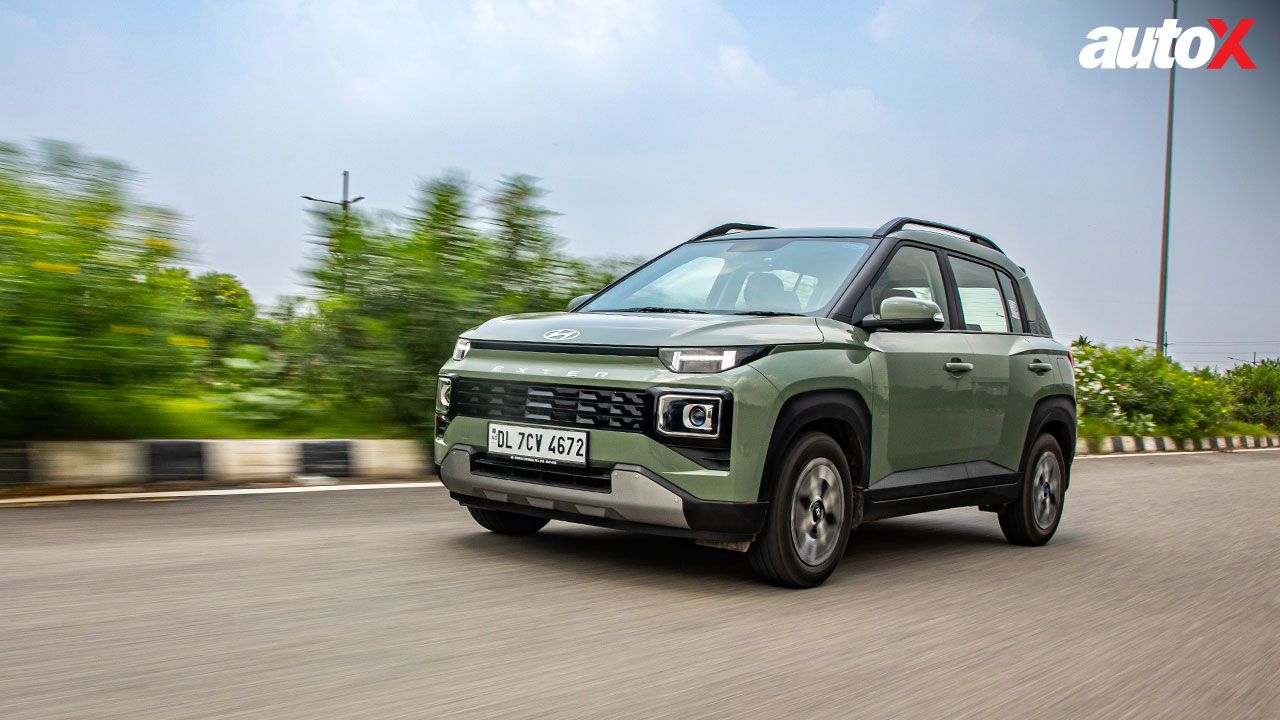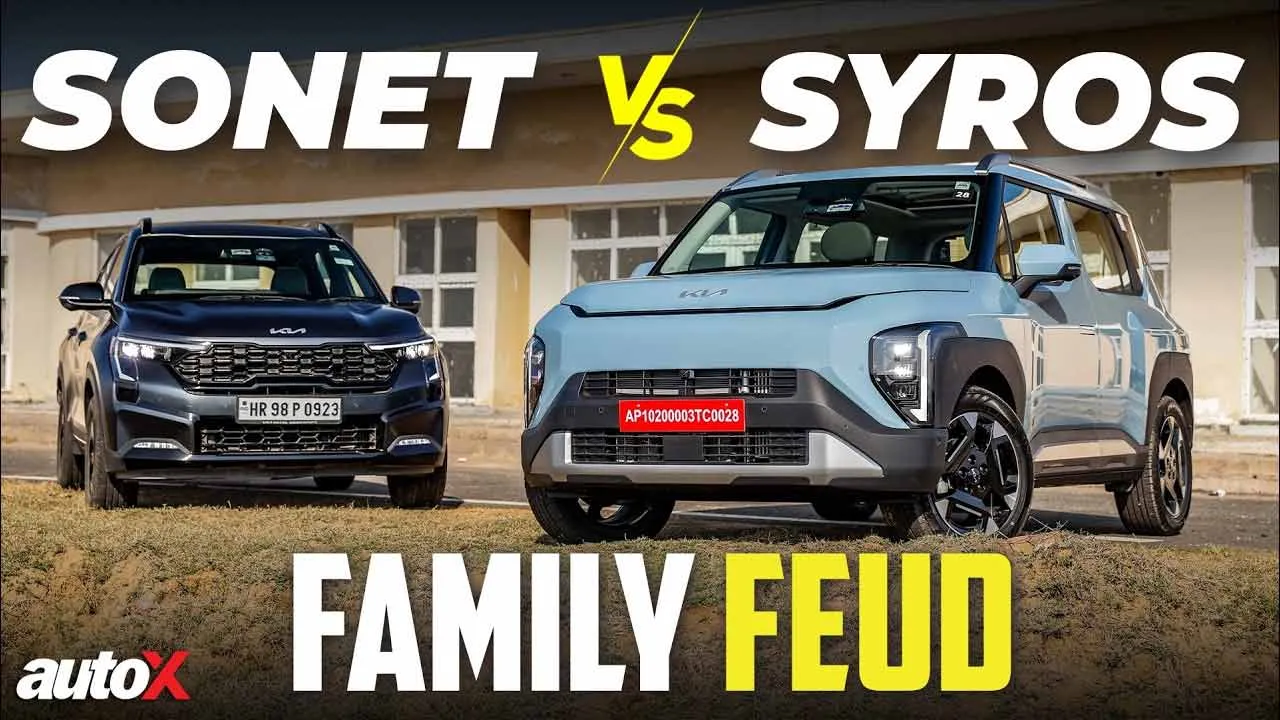Plug & Play: 2024 BMW iX1 vs Volvo C40 Recharge vs Kia EV6 vs Hyundai Ioniq 5
Four characters. Four exciting electric SUVs. Who made the right choice? We let the boys bicker it out as they compare the four contenders on the road as well as on a go-kart track.

Seemingly, to be divided over virtually everything that exists under the sun has become a new norm. Be it politics, religion, race, cuisines, sporting icons, or even our preferences in vehicles, everybody seems determined to claim that ‘mine is better than yours’.
A similar scenario unfolded in our office when the brand-new BWM iX1 – the company’s entry-level luxury electric SUV – turned up in our office’s parking lot. Our colleague Dhruv Paliwal was quick to jump the gun to claim that it’s the best luxury EV in its segment after driving it just once, or perhaps twice, up and down a stretch of the road. But Aakash was in no mood to concede Dhruv’s claim, so he rang Volvo to send the C40 Recharge to our location and argued that it is undeniably superior to the BMW in every aspect. He further contended that the Volvo looks ten times better than the BMW, thanks to its sloping coupe roofline and understated aesthetics.
When Karan, always ready to don tuxedos and styling his hair with the strongest of gels, overheard the debate on style, he couldn’t resist joining in. His claim? The Kia EV6! He asserted that the EV6 is the epitome of style, citing its spaciousness and abundance of features. He also claimed that if one can look past the snob appeal of the BMW or the Volvo badge, the EV6 offers an unmatched value for money for EV buyers in the segment.
Upon hearing the term ‘value for money’, Shivank decided to barge in from nowhere and claimed that no one does it better than the Hyundai Ioniq 5, which is substantially more affordable than the other three. He further highlighted that it matches, if not exceeds, the other contenders in terms of drive quality, comfort, space, features, and X-Factor. He even went as far as likening the Ioniq 5 to sports cars, given its RWD layout – yeah, we, too, think he may have gotten carried away a bit.
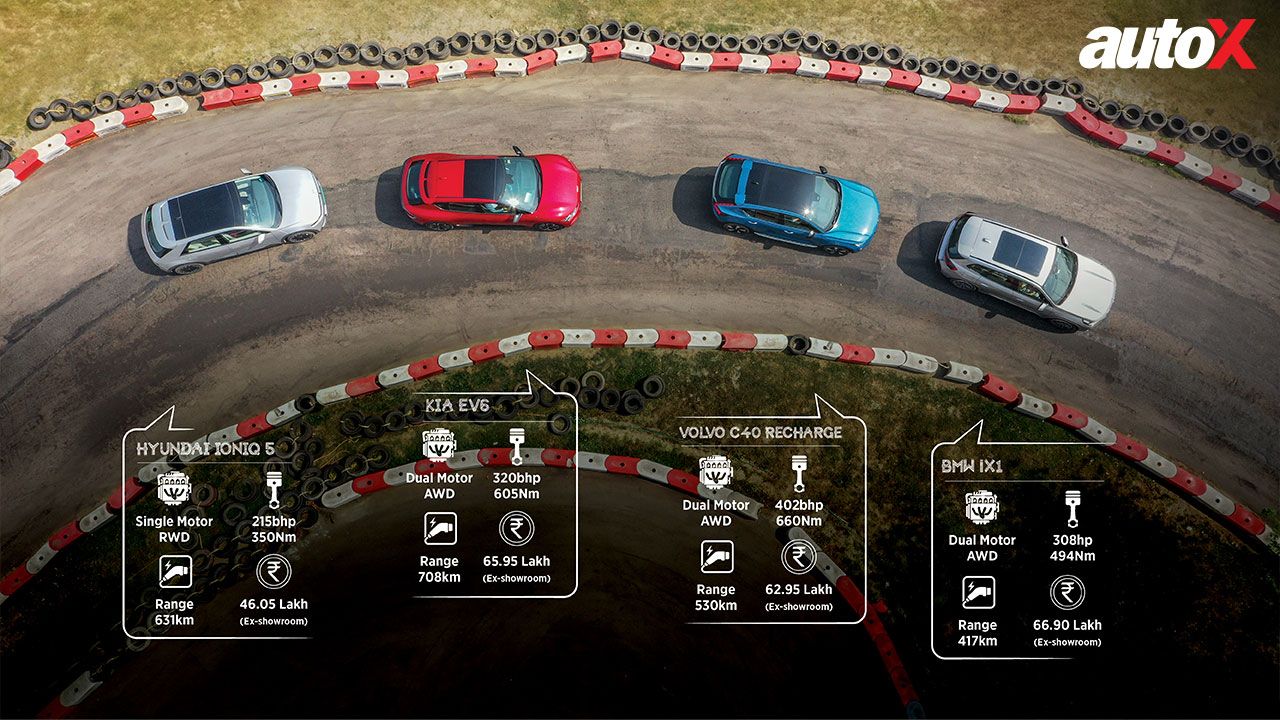
As you would expect, this whole discussion escalated into a heated argument within minutes, with all four of them trying to talk over each other. Sensing the rising tension, we decided to send them out into the real world – along with a detour to a go-kart track for a bit of added fun – to settle the argument with some facts and figures before it came to blows.
So, who was right? Let’s hear directly from each participant as they make a case for their set of wheels before picking a winner.
BMW iX1: Badge of Honour
Words: Dhruv Paliwal
Buying an electric car can feel like navigating through a minefield nowadays, particularly when considering the array of premium electric vehicles available in the Indian market. The BMW iX1 stands as one of the entry-level SUVs, and while my colleagues may argue that the Ioniq 5, EV6, and the C40 surpass the iX1 as an EV, I firmly believe the iX1 outshines them all. Let me elaborate.
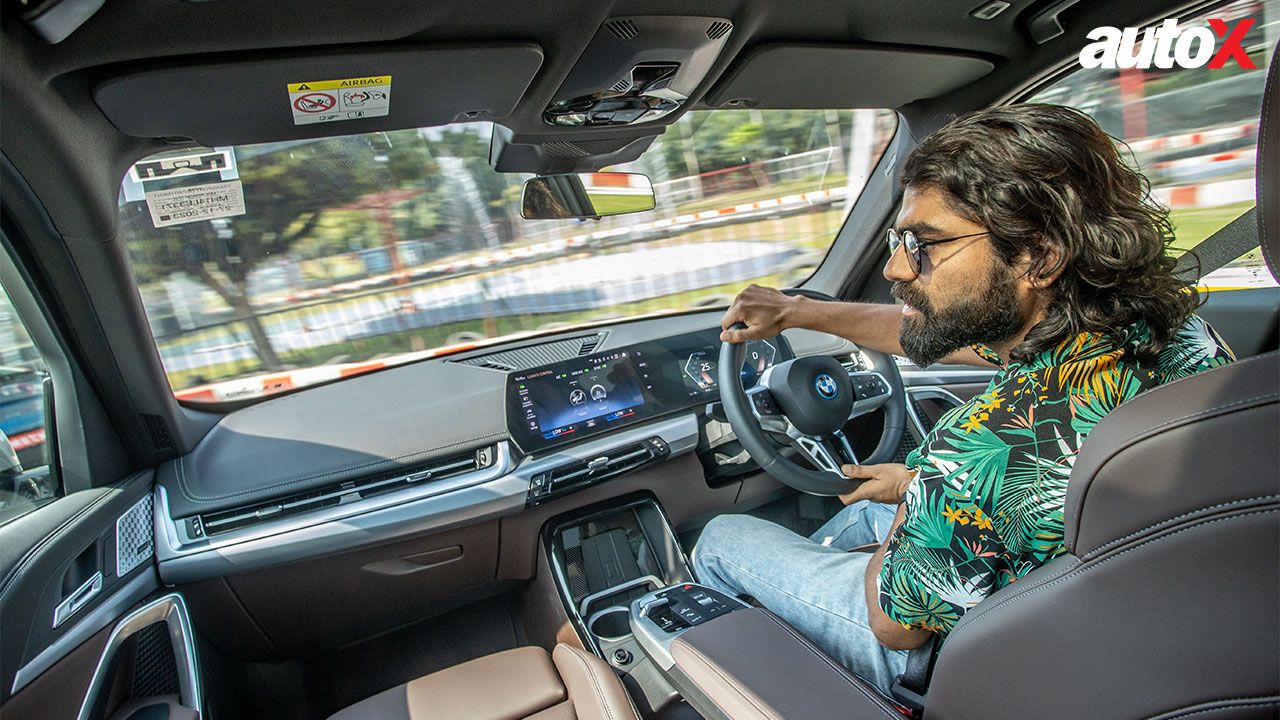
Let’s begin with performance and driving dynamics. In both these aspects, the BMW iX1 is far superior to the rest. While Shivank may try and convince you that the Ioniq 5 with RWD is the best handling car, there is no denying the fact that it is not even in the same league as these other cars, given its modest power output. Karan, on the other hand, couldn’t stop raving about the dual-motor setup of the EV6, but what he doesn’t mention is the understeer induced by its large wheelbase while exiting fast corners. As for the Volvo C40, I think while it overtakes the iX1 in terms of performance with its explosive speed, its calibration between the throttle and the electric motor seems amateurish at best, not to mention the lack of different regen modes. Now, the iX1 may not be the fastest of the lot, but it certainly offers a comprehensive and dynamic power-packed driving experience that ticks all the right boxes.
In terms of features, the iX1 is not the most well-specced compared to others on the list, but once again, it does offer practical features like massaging seats and a vertical wireless smartphone tray, showcasing BMW’s commitment to functionality rather than to gimmick. While Karan may sing praises of the EV6’s design, I wouldn’t go as far as calling it drop-dead gorgeous. In fact, I also don’t think the BMW can lay a claim to this title, given its understated aesthetics. Instead, I would say that it’s the Ioniq 5 with its neo-retro design that stands out as the coolest car of the lot.
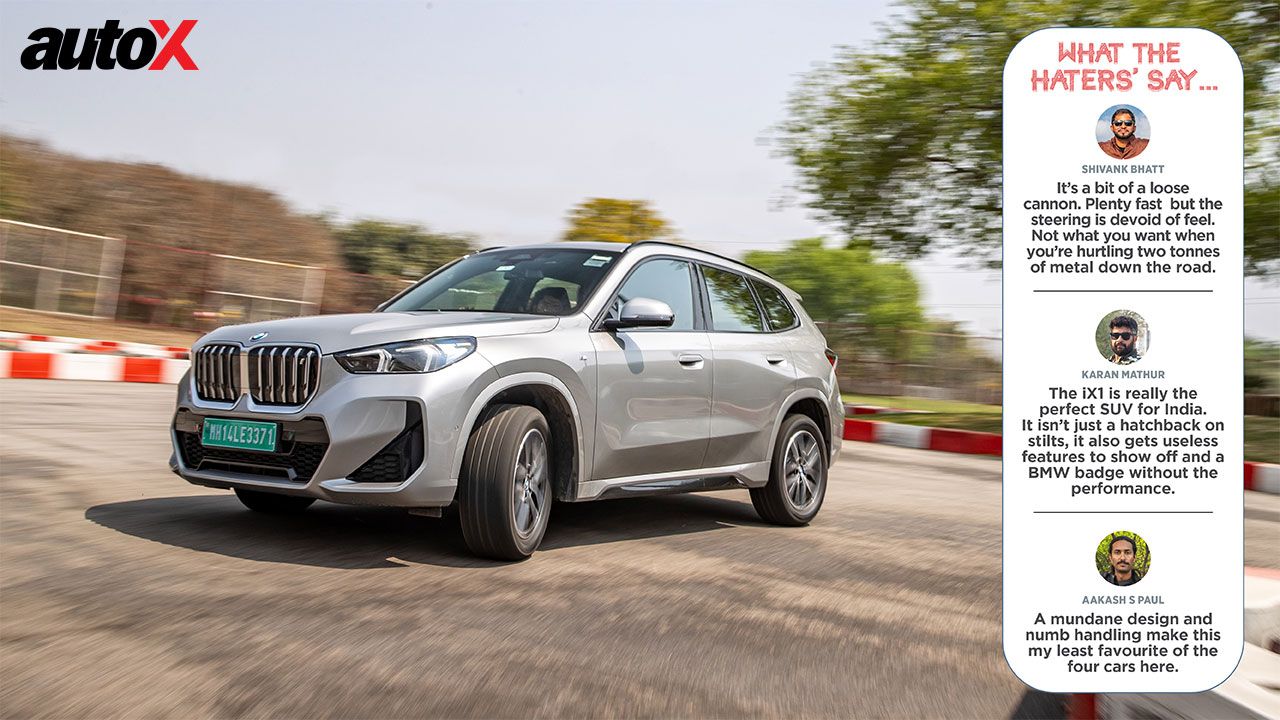
Finally, let us talk about the range. This is where the BMW starts to lag, with its realistic range of just over 300km. While it may fall short compared to others, I would argue that 300km is still enough, especially for urban driving. So, despite not offering numbers to alleviate your range anxiety, the iX1 definitely does the job in the real world. Overall, the iX1 is neither a jack of all trades nor a master of one, but when it comes to getting from one point to another with minimal hassle, the BMW gets the job done admirably and effectively.
Volvo C40 Recharge: Rapid & Regal
Words: Aakash S Paul
Now that I have your attention, allow me to address the important but somewhat mundane details first. The Volvo name is synonymous with safety, and it’s no secret that the brand has pioneered various innovative safety features that have now become industry standards. Even today, Volvo cars are some of the safest in the world, as evidenced by the C40 Recharge’s impressive five-star rating in the Euro NCAP test.
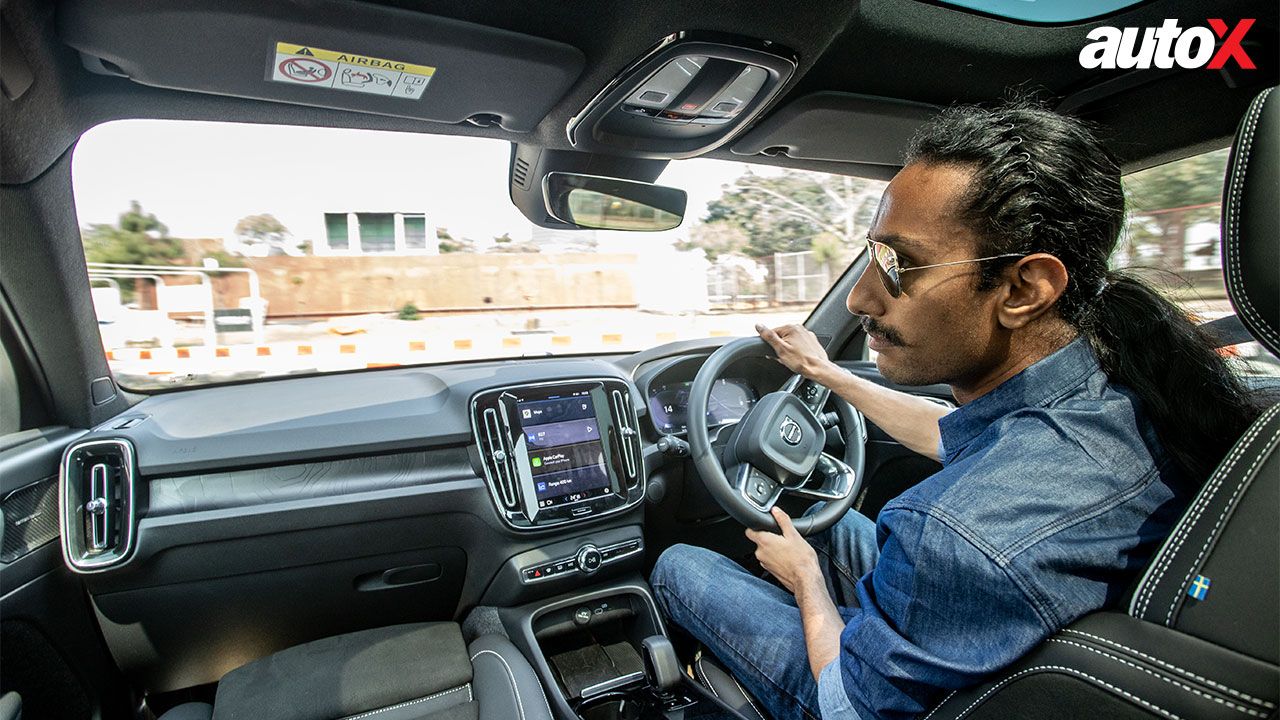
Now, let’s dive into more exciting aspects. After all, when you buy a car, you want to enjoy driving it. And if you are anything like us, you have a penchant for speed! I am sure that even if my colleagues may be hesitant to admit it, they would all relish the opportunity to get behind the wheel of the C40 and experience its exhilarating acceleration every single day. But don’t just take my word for it. According to the specifications sheet, the Volvo offers the quickest straight-line performance, achieving 0 – 100km/h in just 4.7 seconds. This impressive feat is made possible by the dual motor setup, which sends 402bhp and 660Nm to the wheels.
Driving around the go-kart track highlighted the excellent feel of the C40’s brakes and steering. Whether you lightly feather the pedal or brake hard, the C40 responds precisely as you’d expect. Unlike the other three EVs on the list, which have either overly heavy or overly light steering, the C40’s steering strikes the perfect balance. Moreover, any concerns regarding range anxiety are put to rest by the C40’s impressive 78kWh battery pack, which offers a claimed range of 530km.
Now, in terms of design, I think that the Volvo C40 gets it just right. It is not so plain that it blends in the crowd like the BMW iX1, nor is it as unusual as the Hyundai Ioniq 5. And don’t even get me started on the overstyled Kia EV6. The sloping roofline of the C40 Recharge adds a touch of style and finesse, improving the design of the XC40. The elegantly curved taillights serve both form and function, adding to the overall aesthetics of this work of art – one that I wouldn’t mind staring at for hours. Considering the impressive performance of the C40, it speaks volumes that I wouldn’t mind staring at it when I could be tearing up the asphalt with it.
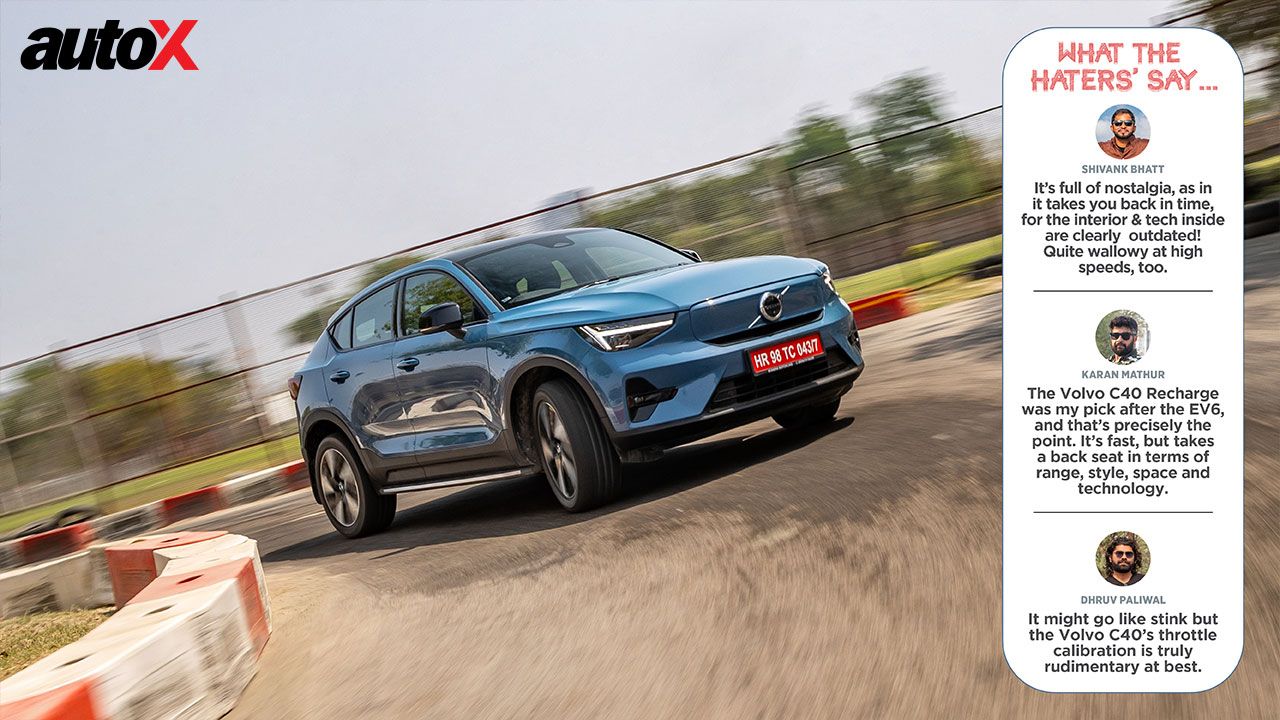
I must admit that the coupe-like roof design has indeed compromised the headroom in the second row and that the dashboard in the C40 is not as flashy as the other contenders. But, then, again, it has all the essential features you’d expect from a modern car, including a Google-based operating system. Plus, when a car performs as impeccably as the C40, you hardly get the chance to miss anything.
Kia EV6: The Undisputed Head Turner
Words: Karan Mathur
That’s some advocacy, except for the fact the C40 looks like a wounded platypus, has less space than a refrigerator, and gets the same level of technology as a Swedish Castle... back when it was built. Save it for the mid-level EV crowd, Aakash – you are in the big leagues now.
Now, don’t get swayed by whatever you have read in this story about other EVs. I say, if you are serious about saving the planet with your car choices, you might as well do it in style. However, despite its spaceship-like design and tech to make a BMW iX1 owner green with envy, the EV6 is a practical family SUV with enough power to embarrass some sports cars, a well-put-together cabin, and a relatively affordable price tag – once you look past the Kia badge, that is (this is probably Shivank’s defence for his single-motor Korean Lancia).
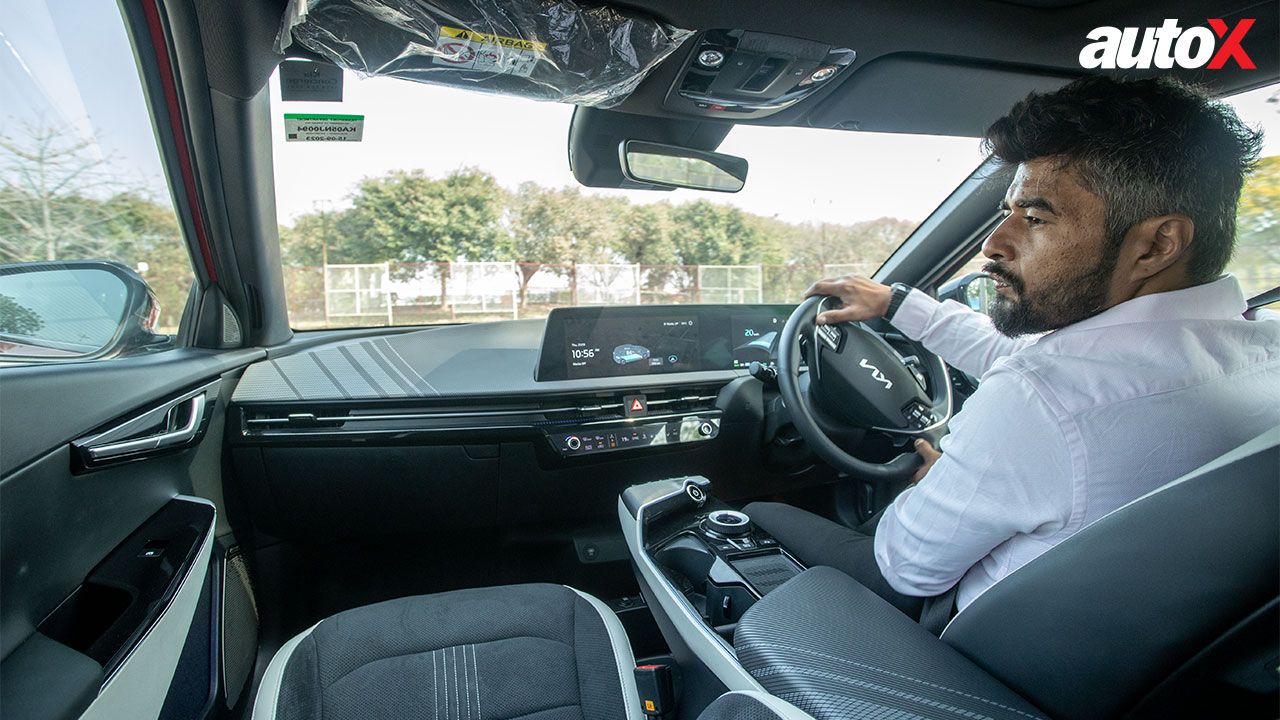
So, before I dive into its performance, let me get straight to the point and address the criticisms levelled by my colleagues – yes, it is big, heavy, and prone to understeer, but it deserves more credit than it’s given. While it may not be as fun to drive as a dedicated sports car, all three of my colleagues will acknowledge that it offers better dynamics than a BMW, and that’s saying something. Now, it’s definitely not as good as the Volvo C40, which is stiffer, shorter, and lighter. However, all this also means that the EV6 is more comfortable, more spacious, and more stable at higher cruising speeds. And these are just plain facts.
In terms of performance, the Kia EV6 is quick enough to do the 0 – 100km/h sprint in just 5.2 seconds. Featuring a 77.4kWh battery pack generating 320bhp and 605Nm of peak torque, the EV6 offers slightly less power than the C40, but more than the other two contenders. However, unlike the C40, the EV6 has been optimised more for a power-range balance. Consequently, while the C40 offers a claimed range of 530km, Kia claims an impressive 708km of range. In practical terms, I can squeeze more range out of the EV6 even with spirited drive than what the C40 can muster up even with a cautious driver like Aakash.

Now, the EV6 looks great, but it also has enough features to put the rest of the contenders to shame. Let me just mention a few – twin 12.3-inch curved screens, heated seats, a heated steering wheel, a 14-speaker Meridian sound system, a 360-degree camera, ADAS technology, and fold-flat electrically adjustable front seats. Did I mention it has the best-looking interior of the lot? An EV, even today, still feels like futuristic technology for many, so why not get an EV with a cockpit straight out of the Star Trek Enterprise?
Hyundai Ioniq 5: Have Your Cake & Eat It Too
Words: Shivank Bhatt
You won’t find a more delusional bunch than my three colleagues here. You see, when it boils down to offering the best bang for your buck, you would have to be living in a cave to not know who’s the top dog – the Hyundai Ioniq 5, of course.
Sure, the BMW boasts luxury, the Volvo offers gut-wrenching acceleration, and the Kia has space, features, and style by the bucketloads, but if you were to club all these facets together, what would you get? The Ioniq 5. It’s as simple as that.
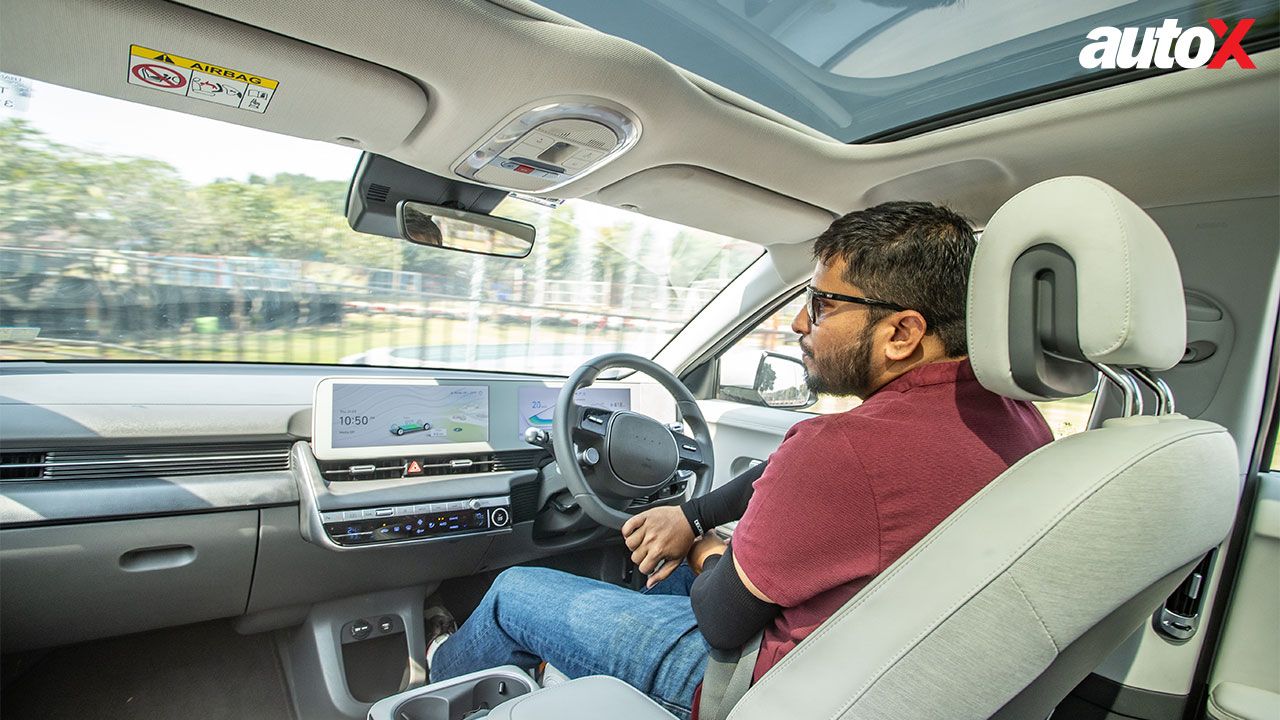
On a more serious note, just because the Ioniq 5 happens to be the ‘cheapest’ of the lot doesn’t mean you’re getting short-changed. Instead, it’s a product that seriously punches above its weight in virtually all departments. Let’s start with the design first. It’s a seriously, seriously cool-looking car. It seamlessly blends the retro elements of the 70s with contemporary neo-styling, making it an instant head-turner. The sharp creases, Pixar-inspired aesthetics, short overhangs, a classic 70s hatchback-like stance, and those mahoosive 20-inch turbine-wheel design exude a Back to the Future vibe that’s hard to resist.
It’s much the same story inside – the interior is a blend of elements from a sci-fi movie and a sumptuous lounge. The tech on offer is mind-blowing, while the creature comforts are second to none. In fact, it’s the only vehicle here to get heated and electrically adjustable rear seats. And speaking of the rear bench, the Ioniq 5 has acres of room – it is incredibly spacious.
What about performance? Well, on paper, the Ioniq may not have the outright firepower of its rivals, but on the road, it’s a different story – you won’t call it slow for sure. While the other three offer neck-snapping acceleration, the Ioniq’s turn of speed is relatively measured and predictable. It’s still plenty fast, but at no point does it feel overwhelming. What’s more, the paddles behind the steering wheel help you switch between the four regen modes on the go, which is like shifting manually using a traditional auto / DCT gearbox. It’s brilliant and super intuitive. Only the Kia offers a similar experience since it’s the Ioniq’s body double.
Overall refinement levels are exemplary, but since our test car had accumulated over 15,000km, it did produce loud rattles over bad roads. The ride quality isn’t bone-jarringly harsh though. Not to mention, among all the cars here, the Ioniq’s suspension felt the most absorbent.
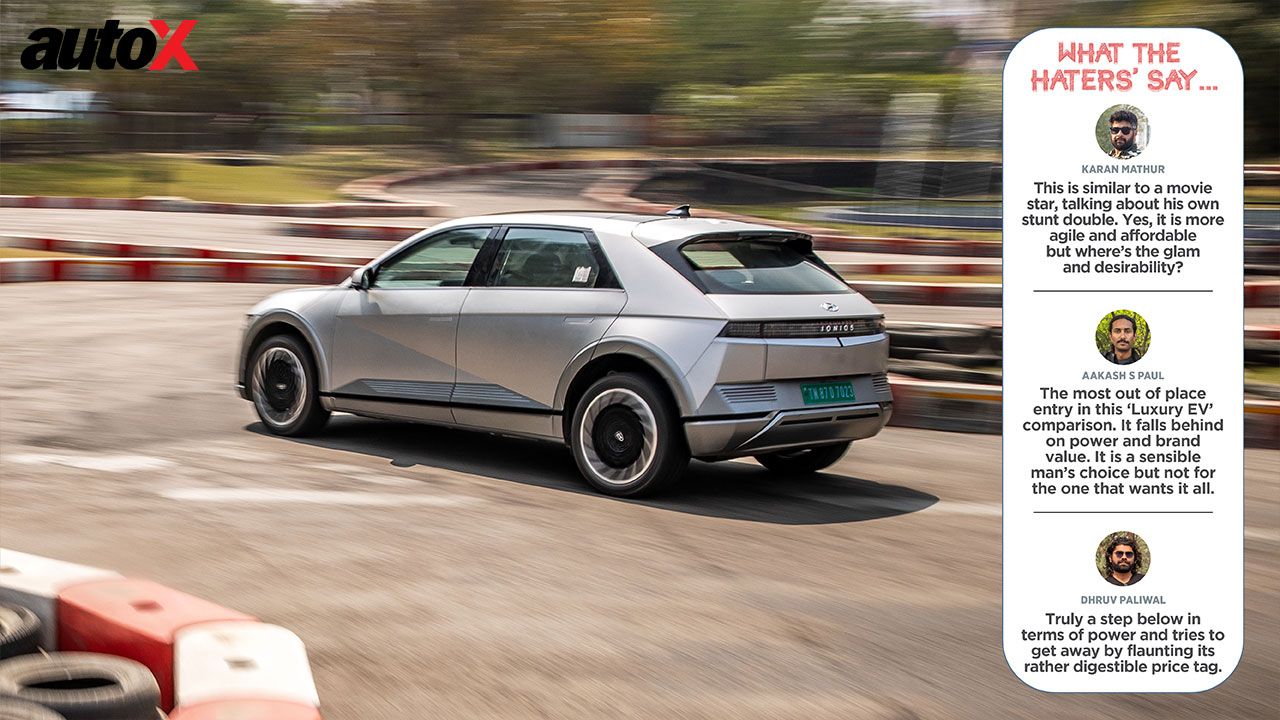
On the handling front, none of these EVs behave like go-karts, of course. However, the Ioniq’s RWD layout makes it a hoot to drive compared to the AWD setup of the other three. Turn the traction control off, and you will see its all-electric torque light up the rear tyres in a cloud of smoke. Sure, it’s a heavy bruiser, and with 3,000mm of wheelbase (longest of the lot), it doesn’t quite turn on a dime, which was quite evident at the track. But still, it’s a fun and predictable handler – something that’s also reflected in its lap time.
The absolute icing on the cake, however, is its pricing. The Ioniq 5 undercuts all three rivals by nearly ₹20 – 25 lakh. To give you some perspective, you can buy a top-spec petrol Creta for your wife with the money you save while picking up the Ioniq 5 from your Hyundai dealer (happy wife, happy life, yay!). And that’s what swings the verdict in favour of the Ioniq 5, at least for me. Not only does it offer the best of everything among all the EVs here, it also offers it at the best price.
Plot Twist: Track Attack at Formula Karting
It’s a common belief that EVs are cumbersome to drive. While there is some truth to the statement, it would be unfair to call all EVs boring. You see, not all EVs are uninspiring to drive as the cynics will have you believe.

To counter this belief that EVs are ungainly when driven enthusiastically, we decided to add somewhat of a plot twist to this story by taking all four contenders to a tight and technical go-kart track. The idea was simple – set a benchmark lap time with a kart around the track, and then try to beat our own times in our respective SUVs. The one who comes closest or undercuts the kart’s lap time wins.

We chose the Formula Karting track in Noida for this endeavour. Built-in an area of around four acres, this track has a running length of 770 metres and a width of eight metres. It’s fair to say that the track had ample space for our antics for the day. Not to mention, it’s one of the few karting venues in the country where you can actually push a car close to its limits and have fun in the process.
For the go-kart session, each of us had 10 minutes to post our best times. Formula Karting uses made-in-France Sodi RT8 karts. Powered by a Honda-sourced 270cc engine, these karts are capable of reaching speeds of up to 100km/h. However, for the general public, the speed is restricted to 50km/h. If you can produce your racing credentials in time (unfortunately, we couldn’t), the speed limiter can be removed. In fact, many amateur and budding racers frequent the track to hone their skills.
Lights out and away we go!
Watching a go-kart from the sidelines may not look exciting, but when you’re behind the wheel, it offers unparalleled fun. Thanks to the featherlight weight and telepathic steering of these karts, the adrenaline rush you get while threading these karts through corners is simply unmatched. This was quite evident from the wide grins on the faces of our team members after just one session.

In a friendly and not-at-all-competitive (that’s what they told us) session, Shivank – despite being one too many kilos heavier than the other three – managed to clock the fastest time of the day. Following closely behind in second place was Dhruv P, who believed he could have gone faster had he not kissed the barriers during one of his hot laps (well, you’ve got to string it all together perfectly every single time!). Aakash took the final place on the podium, which was a big disappointment since he was the bookies’ favourite given his lightweight build and the silly power-to-weight advantage he had over others. Karan came last, although he complained that his kart developed some fault midway, which prevented him from showing his true Verstappen-like pace on the track (classic racing driver excuse!).
Verdict
It’s crunch time! So, which one’s the best?
Well, we let the boys decide in the end. Now, of course, they couldn’t come to a unanimous agreement on a single car. Right up until the end, each one staunchly defended their respective car as the best. However, to eliminate personal bias, we asked them to rank all the cars on a scale of 1 to 4. The top-ranked car would receive a total of four points, while the lowest-ranked car would only earn a single point.
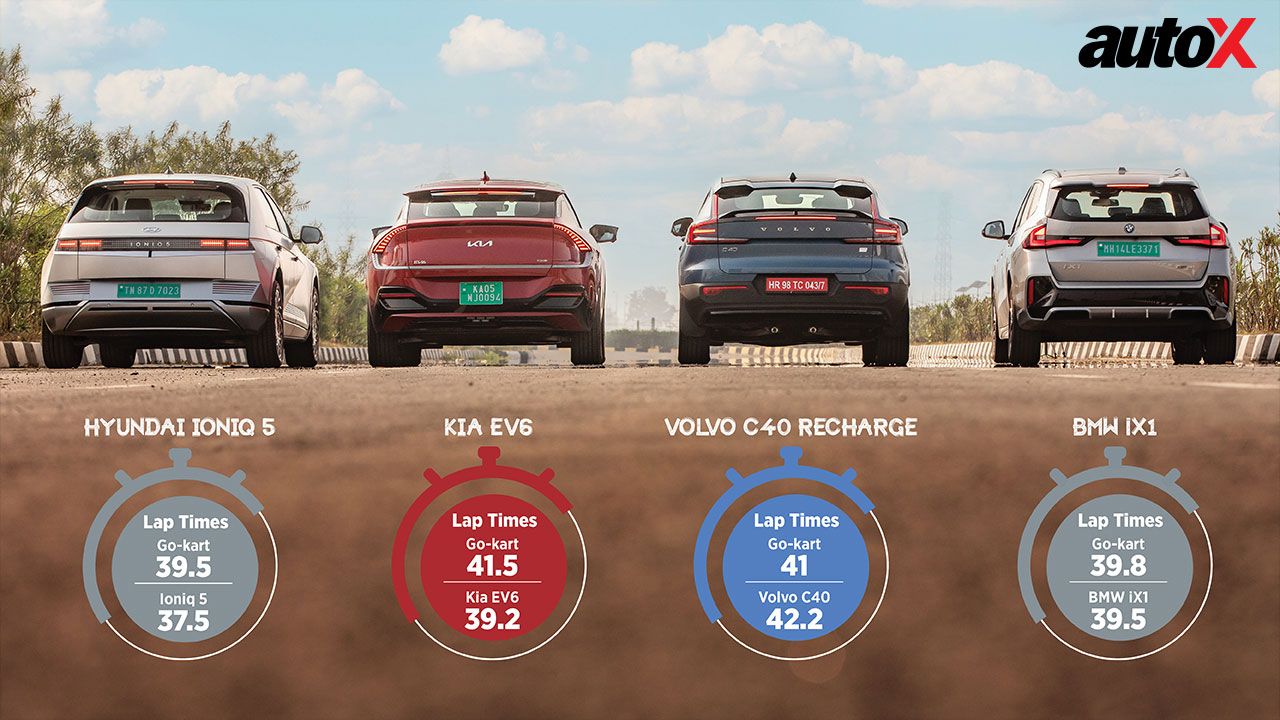
As anticipated, everyone ranked their car at the top. However, what truly mattered in the final scores was where the other cars landed in the rankings, along with their lap times vis-à-vis those set on karts. And surprise, surprise, when the final points were tallied (check the table below), the Ioniq 5 emerged as the winner, followed by the EV6, the C40, and the iX1.
Technically, Shivank and Ioniq 5 were the winning combo, but if Dhruv, Karan, and Aakash are to be believed, they were just voting for the second-best option. Well, to each his own then…
| BMW iX1 | Volvo C40 | Kia EV6 | Hyundai Ioniq 5 | |
|---|---|---|---|---|
| Dhruv P | 4 | 2 | 1 | 3 |
| Aakash | 1 | 4 | 2 | 3 |
| Karan | 1 | 3 | 4 | 2 |
| Shivank | 1 | 2 | 3 | 4 |
| Lap Time^ | 0.3 | -1.2 | 2.3 | 2 |
| Total | 7.3 | 9.8 | 12.3 | 14 |
*Points are awarded based on rankings given by each reviewer, with the top-ranked vehicle getting 4 points and the lowest, one point.
^ Points for lap time are calculated based on the difference between the times set by each reviewer in the kart & their respective EV.

